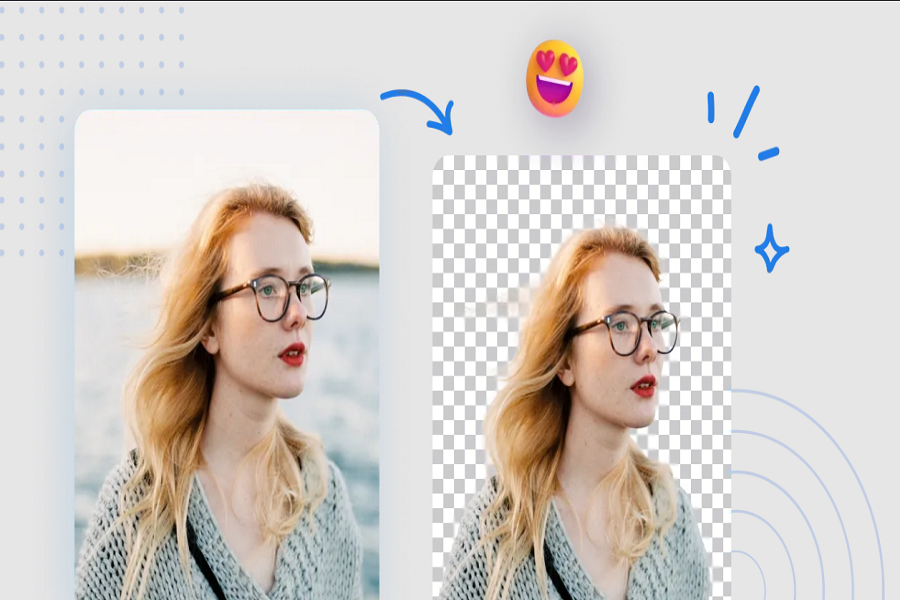Removing backgrounds from photographs is a critical skill that has gained prominence in both photography and graphic design. The process of background removal is essential in various scenarios where the primary goal is to enhance the visual impact of images. For example, in product photography, a clean and distraction-free background allows the product to take center stage, making it more appealing to potential buyers. This clear focus helps to convey the product’s unique features and benefits effectively, often influencing consumer purchasing decisions.
Understanding the Importance of Background Removal
In portrait photography, Edit photo delete background . A cluttered or busy background can detract from the subject’s facial expressions and overall aura. By isolating the subject, photographers can create more powerful and engaging images that elicit emotional responses. This technique can also be particularly useful when preparing images for profile pictures, resumes, or social media, where first impressions matter significantly.
Moreover, in the realm of marketing materials, background removal plays a pivotal role. Clean, professional images are vital in campaigns aimed at aligning with a brand’s identity. By utilizing high-quality imagery where the subject is prominently featured, businesses can effectively convey their message and values. This practice fosters brand recognition and aids in establishing a connection with the target audience. By showcasing products or services clearly against an uncluttered backdrop, companies can achieve greater visual clarity, making their materials more effective in capturing attention and driving engagement.
In conclusion, mastering the art of background removal serves numerous advantages, from improving the focus on subjects in photos to elevating branding efforts across various platforms. As such, it is an essential skill in today’s visual-centric world.
Tools and Techniques for Background Removal
In the realm of photo editing, the ability to effectively remove backgrounds plays a pivotal role in enhancing the visual appeal of images. Various tools and software are available, catering to both novice and experienced users alike. Among the most renowned is Adobe Photoshop, a robust software that offers advanced features such as the lasso and pen tools for precise background extraction. Photoshop’s extensive capabilities come with a learning curve and a subscription fee, making it a choice primarily for professionals.

For those seeking free alternatives, GIMP (GNU Image Manipulation Program) presents another remarkable option. As an open-source tool, GIMP provides users with features comparable to Photoshop, including customizable brushes and layers. Its manual background removal techniques, such as the fuzzy select tool and manual layer masks, offer flexibility but may require some practice to master for optimal results.
In addition to these software options, numerous online tools have emerged, simplifying the background removal process. Remove.bg is particularly noteworthy; this AI-driven platform automates the background removal with impressive accuracy and speed. Users need only upload an image, and the tool takes care of the rest, making it an excellent choice for those who prioritize efficiency. However, for high-resolution downloads, a fee may apply.
Mobile applications also provide viable solutions for background removal, accommodating users who prefer editing on their smartphones. Apps like Background Eraser and PicsArt allow for both manual and automated techniques, offering made-for-mobile user interfaces that enhance accessibility. These applications are generally easy to use and often free, making them ideal for quick edits on-the-go.
In conclusion, whether opting for professional software, utilizing online tools, or engaging with mobile applications, the selection of background removal solutions is vast. Each option presents unique features, ease of use, and pricing structures, allowing users to choose the tool that best fits their editing needs and skill levels.
Related Articles: How to apply edits to all photos in lightroom
Step-by-Step Guide to Deleting Backgrounds in Photos
Removing backgrounds from images can significantly enhance their visual appeal and focus the viewer’s attention on the subject. This guide will outline a comprehensive process for effectively deleting backgrounds using popular editing tools such as Adobe Photoshop or online alternatives. Follow these steps to achieve clean and professional results.
Begin by opening your chosen software and importing the image you wish to edit. The initial step involves using selection tools to isolate the subject. In Photoshop, the ‘Quick Selection Tool’ or the ‘Magic Wand’ allows you to click and drag over the areas you want to keep, while the background is automatically detected. For online editors, similar tools are usually available and can accomplish the same function.
Once the subject is selected, refine the edges of your selection to eliminate any leftover background details. Tools like ‘Select and Mask’ in Photoshop provide options for feathering or smoothing edges, ensuring a natural transition. Avoid common mistakes such as over-selecting or underselling your subject, which can lead to harsh edges or jagged outlines.
After achieving a satisfactory selection, you can remove the background by simply deleting the selected area or opting to hide it on a new layer. If color mismatches occur—often resulting from shadows or reflections—consider using the ‘Refine Edge’ tool to adjust color settings for better blending.
Finally, it is vital to save your edited image in the appropriate format. For web use, opt for JPEG or PNG formats, ensuring to maintain quality while optimizing loading speeds. For print, TIFF or high-resolution JPEGs are preferable. Following these steps will help ensure clean results and enhance the overall quality of your images, allowing for professional presentation across various platforms.

